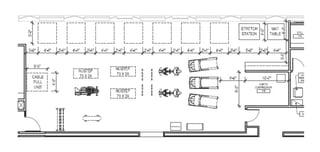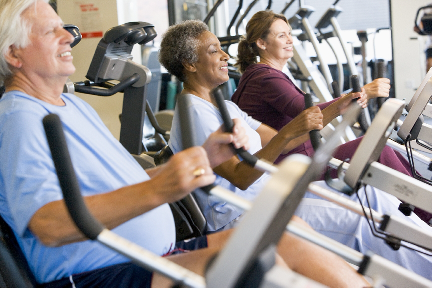This post was updated on May 7, 2018.
There is a trend  among owners and operators of senior living communities toward a focus on resident wellness. The movement is based in research findings which indicate that opportunities for residents to live actively are important both to prospective residents as well as to their family members. Couple those findings with the constant news updates about how good regular exercise is for older adults and its easy to see why communities are so focused on ramping up their resident wellness programming.
among owners and operators of senior living communities toward a focus on resident wellness. The movement is based in research findings which indicate that opportunities for residents to live actively are important both to prospective residents as well as to their family members. Couple those findings with the constant news updates about how good regular exercise is for older adults and its easy to see why communities are so focused on ramping up their resident wellness programming.
Size isn't the only consideration.
Size is an important consideration, but it shouldn't be the only consideration. Much positive and fulfilling life can be lived by your residents in even the smallest spaces. We've worked with several clients who are small on space, but significant on providing meaningful and effective programming designed to engage rather than entertain residents. The challenge becomes accommodating as many participants as possible when your footprint is tight. Creative thinking can often help you solve issues like not enough equipment or overcrowding in exercise classes.
Where size does matter is when we're looking at the passion, personality, and skills of the individual(s) leading the exercise programming at your community. Even the biggest, shiniest, most state of the art fitness centers, pools, and other healthful spaces will become like a ghost town if there is no staff presence (or it’s the wrong staff presence) there to connect with your residents. Staff personality and capability reign supreme when it comes to a quality, compelling, and invitational programming at your community.
[Learn More: Read our case studies on the impact of staff for a successful exercise program]
Get the size of your staffing just right.
There are a few ways you can invest in quality staffing for your exercise program:
- You can provide your own staffing.
- You could also consider tapping an existing partner for this service. We see therapy groups sliding into this market.
- You can partner with a group like NIFS who does fitness center management as a core business.
There’s a lot at stake here. Not enough staffing, or the wrong staff member(s) could poke a serious hole in what should be an uplifting, feel-good offering at your community. If you don’t have the money to spend on the bricks and mortar, make sure you have the resources to effectively operate what space you do have, or the entire investment could provide less than stellar results.



 With the elderly population only increasing, many senior living fitness centers are looking outside the box for ways to keep their residents moving and their spirits high.
With the elderly population only increasing, many senior living fitness centers are looking outside the box for ways to keep their residents moving and their spirits high.  As exercise science professionals, many of us are in our peak fitness years. We work with a wide range of clientele in our corporate and retirement fitness centers, and we assume that we know how to adapt exercises to how the older generation operates. But do we really know what it feels like to age?
As exercise science professionals, many of us are in our peak fitness years. We work with a wide range of clientele in our corporate and retirement fitness centers, and we assume that we know how to adapt exercises to how the older generation operates. But do we really know what it feels like to age? ependence. Regular strength training can help them do this from a physical standpoint, but maintaining their cognitive abilities is equally important. Interestingly enough, a loss in cognitive abilities is a risk factor for falls.
ependence. Regular strength training can help them do this from a physical standpoint, but maintaining their cognitive abilities is equally important. Interestingly enough, a loss in cognitive abilities is a risk factor for falls.